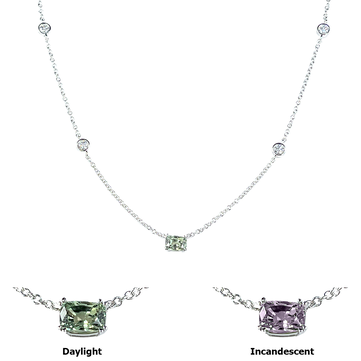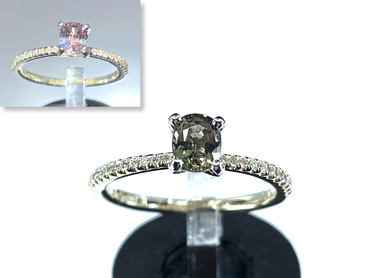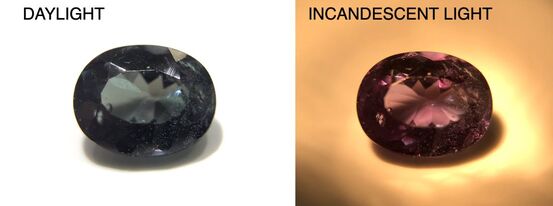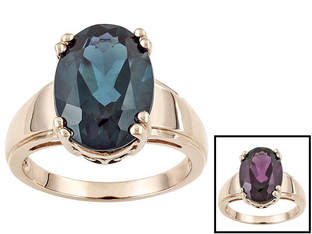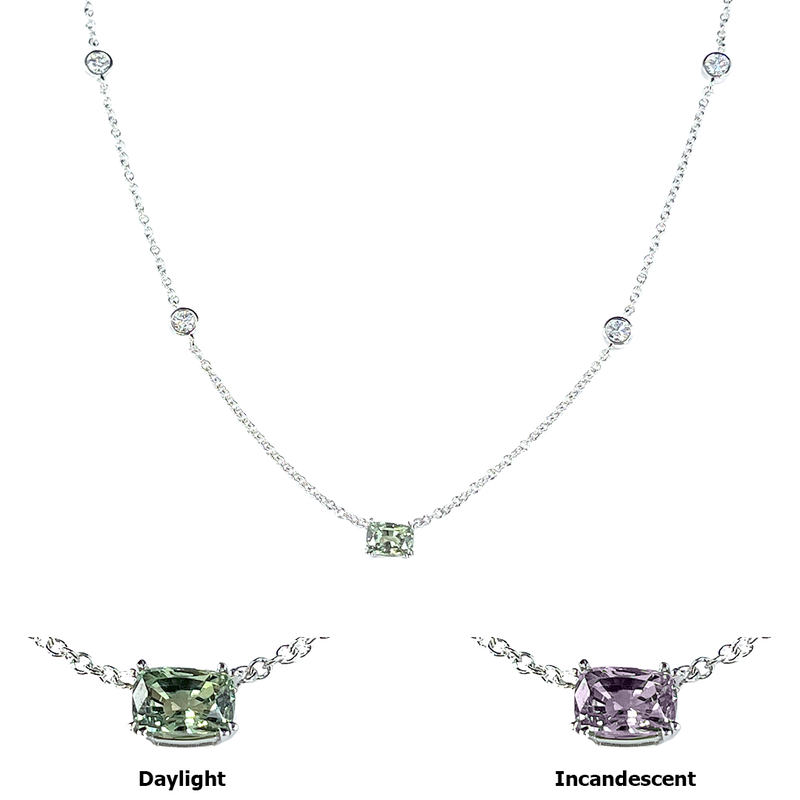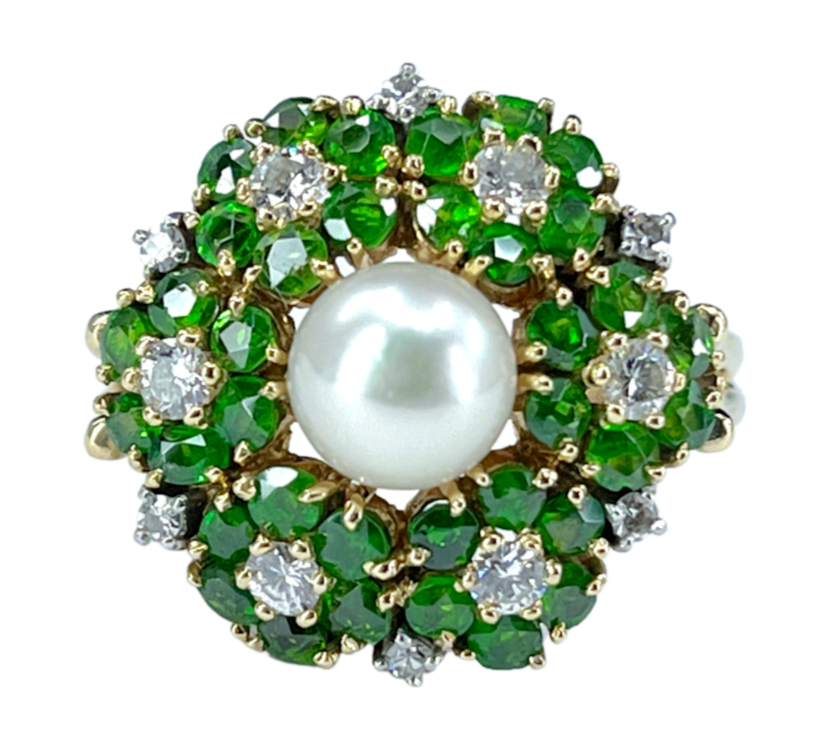aLEXANDRITE
|
Variety: Alexandrite
Species: Chrysoberyl Mohs Hardness: 8.5 out of 10 Color: Bluish green to green in fluorescent light, purplish red to red in incandescent light. RI: 1.746 to 1.755 (+0.004 / -0.006) Phenomena: Color change Birefringence: 0.008 to 0.010 SR/DR/AGG: DR Clarity Type: Type II Optic Character: Biaxial positive Pleochroism: Strong green, orange & purple-red trichroism Spectrum: Purple/Red direction: Strong lines in the red at 678 & 680.5nm. Weaker ones at 645 & 655nm. Broad absorption from 540 to 605nm. Green direction: Strong lines in the red at 678 & 680.5nm. Weaker ones at 645, 649, 655 & 665nm. Broad absorption from 555 to 640nm. Fluorescence: Inert to moderate red under LW & SW. SG: 3.73 (+/-0.02) Routine Treatments: None |


